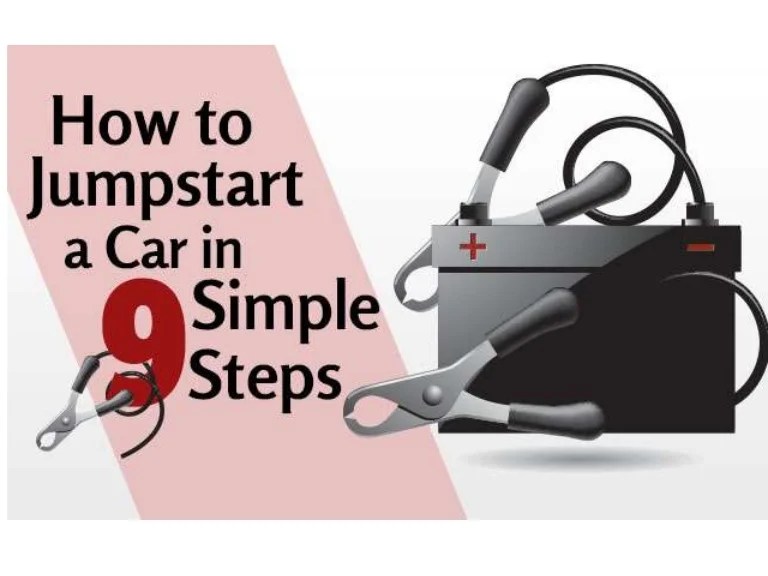How to jumpstart a car is an essential skill every driver should know. Whether you’re stuck in a parking lot with a dead battery or helping a friend in need, jumpstarting can save the day. With statistics showing that millions of drivers face battery failures each year, understanding the jumpstarting process becomes crucial for keeping you on the road. Knowing the right tools, steps, and safety precautions can make this daunting task straightforward and efficient.
In this guide, we’ll walk you through everything from the necessary tools to a detailed step-by-step procedure, ensuring you feel confident and prepared for any battery emergency. Let’s get your engine roaring again!
Introduction to Jumpstarting a Car
Jumpstarting a car is an essential skill that every driver should know. When your vehicle’s battery dies, it can be a significant inconvenience, especially if you’re in a hurry or far from home. Understanding the purpose and importance of jumpstarting can save you time and frustration. Jumpstarting is typically required in scenarios such as leaving your headlights on overnight, extreme weather conditions that drain the battery, or if your battery is simply old and no longer holds a charge.
Statistics indicate that battery failures are one of the leading causes of roadside assistance calls. According to the American Automobile Association (AAA), nearly 30% of all drivers experience a battery-related issue at some point in their lives. This underscores the importance of knowing how to jumpstart your car efficiently.
Tools Needed for Jumpstarting
Having the right tools on hand makes jumpstarting your car a much simpler process. Below is a list of essential tools needed for jumpstarting:
- Jumper Cables: These are heavy-duty cables designed to connect your dead battery to a functioning battery, allowing for the transfer of power.
- Gloves: Wearing gloves protects your hands from any potential acid leaks and provides a better grip on the cables.
- Safety Glasses: Safety glasses protect your eyes from any sparks that may occur during the jumpstart process.
Jumper cables consist of two insulated wires with clamps on each end. They work by connecting the positive and negative terminals of both batteries, allowing for the flow of electricity. The safety gear mentioned earlier is crucial to ensure that you remain protected throughout the process.
Step-by-Step Guide to Jumpstarting a Car
To safely jumpstart a car, follow this step-by-step guide:
- Position the working vehicle close to the dead vehicle, ensuring they don’t touch each other.
- Turn off both vehicles and connect the jumper cables in the following order:
- Red clamp to the positive terminal of the dead battery.
- Red clamp to the positive terminal of the working battery.
- Black clamp to the negative terminal of the working battery.
- Black clamp to a grounded metal surface on the dead vehicle.
- Start the working vehicle and let it run for a few minutes.
- Attempt to start the dead vehicle.
- Once started, carefully remove the cables in reverse order.
It’s essential to follow the correct order when connecting the cables, as doing it incorrectly can cause damage to the vehicles’ electrical systems.
Safety Precautions, How to jumpstart a car
Before jumpstarting a car, taking key safety precautions is vital. Here are some important points to keep in mind:
- Ensure both vehicles are turned off before connecting the cables.
- Check the battery for any leaks or cracks before proceeding.
- Keep metal objects away from the battery to avoid sparks.
Potential hazards include battery acid leaks, which can cause burns, and the risk of battery explosions if the cables are connected incorrectly. Wearing gloves and safety glasses is crucial in preventing injuries during the jumpstart process.
Troubleshooting Common Issues
Sometimes, even after following the jumpstarting procedure, the process may fail. Here are some common problems and their solutions:
- If the dead vehicle doesn’t start, check if the jumper cables are connected securely.
- Listen for clicking sounds; this may indicate a faulty starter.
- If the battery is more than three years old, it might need replacement rather than just a jumpstart.
In cases where jumpstarting fails, alternative solutions include calling for professional roadside assistance or using a portable battery jump starter.
Maintenance Tips for Car Batteries
Regular maintenance is key to extending the life of your car battery. Here are some practices you can adopt:
- Check battery terminals for corrosion regularly and clean them if needed.
- Ensure your battery is securely mounted to prevent vibrations that can lead to damage.
- Test the battery voltage at least once a year to ensure it’s operating efficiently.
Signs of a failing battery include a slow engine crank and dimming headlights. If you notice these symptoms, it’s time to replace the battery. A checklist for regular battery inspections should include checking the connections, cleanliness, and overall battery condition.
When to Seek Professional Help

There are scenarios where it’s best to call in the professionals for assistance. If you experience persistent battery problems, or if the vehicle won’t start after several jumpstarts, professional help is necessary.
Finding a reliable roadside assistance service is important; you can choose a provider that offers comprehensive plans covering battery replacement and other services. Having a maintenance plan for your vehicle can prevent unexpected breakdowns and save you money in the long run.
FAQs About Jumpstarting

Here are some frequently asked questions that can help clarify common misconceptions:
- Can you jumpstart a car with a dead battery more than once? Yes, but if it happens frequently, the battery likely needs to be replaced.
- Is it safe to jumpstart an automatic vehicle? Yes, but always consult your owner’s manual for specific instructions.
- What’s the difference between jumpstarting and battery replacement? Jumpstarting provides a temporary power boost, while battery replacement involves installing a new battery for long-term use.
Understanding these FAQs can prevent misunderstandings and ensure safe practices when jumpstarting a vehicle.
Ending Remarks: How To Jumpstart A Car

In summary, knowing how to jumpstart a car is not just about reviving a dead battery; it’s about being empowered to handle unexpected situations on the road. By following the Artikeld steps, adhering to safety precautions, and understanding common troubleshooting methods, you can easily tackle any jumpstart challenge. Remember, regular battery maintenance and knowing when to call for professional help can extend your vehicle’s life and keep you safe on your journeys. So, the next time you’re faced with a dead battery, you’ll be ready to jump right in!